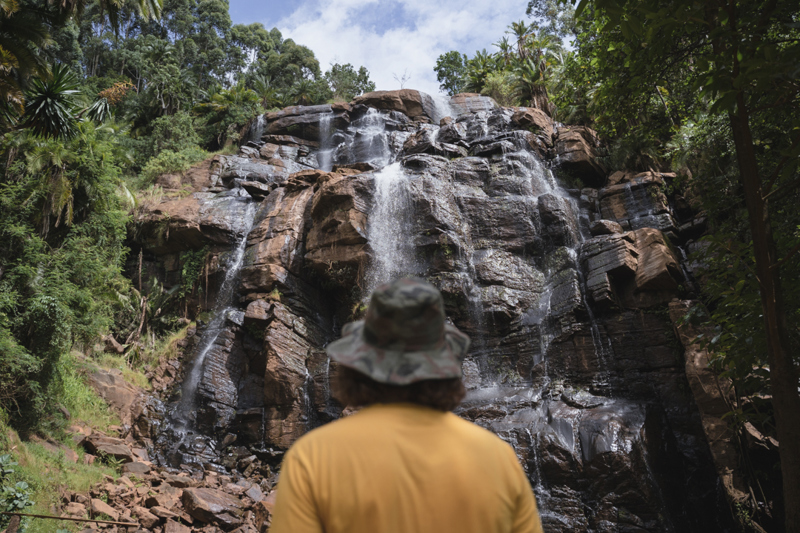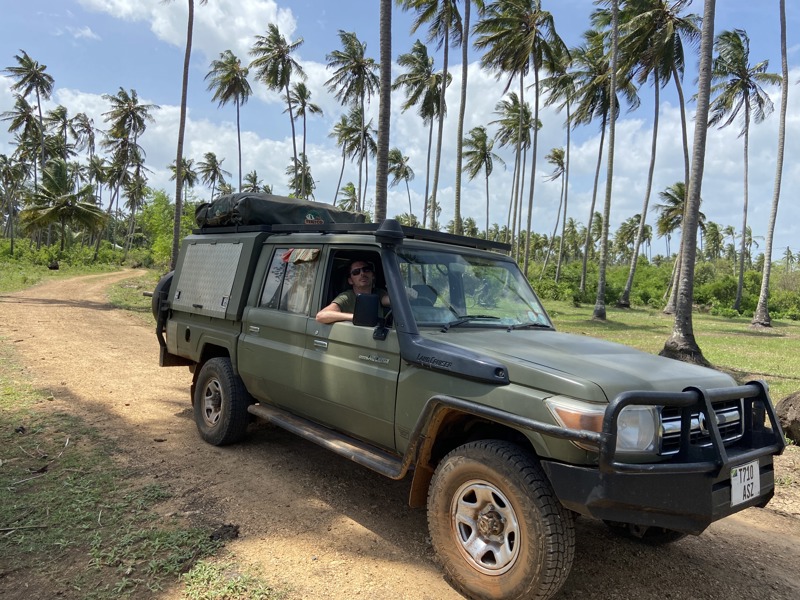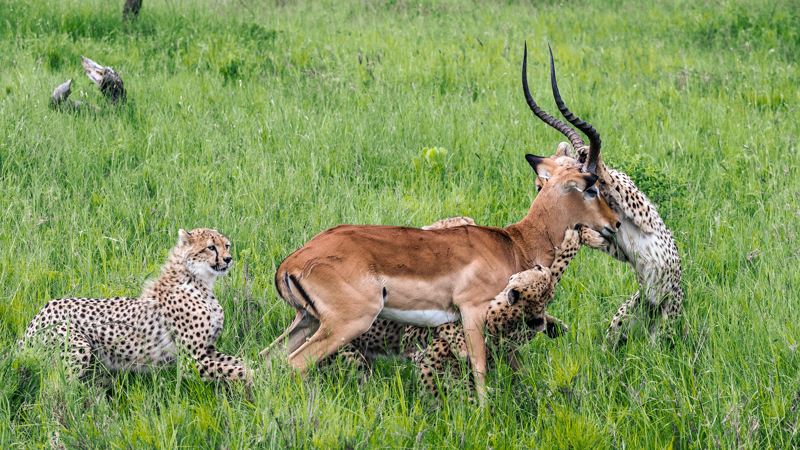When is the best time to visit Tanzania?
Need help with timing your visit to Tanzania? Even though it's always summer in Tanzania, it's helpful to know when the dry - and wet seasons take place, what the best time is to go on safari, and when the peak season starts. We have gathered all you need to know and more, ensuring a well-prepared trip to Tanzania. More questions? Feel free to get in touch with our team at Roadtrip Africa via our contact form!
What's the weather like in Tanzania?
Tanzania lies on the equator and has a pleasant tropical climate. Due to its size, the country does have large regional climatic variations:
- The coastline is the hottest and most humid part of the country.
- Lower-lying areas like Lake Manyara, Lake Eyasi, Moshi, Nyerere, Mikumi and Ruaha are hot but less humid.
- The rest of the country has milder temperatures where it cools down significantly at night.
- Heading out to the Ngorongoro Crater rim? This area receives a lot of rain and, due to its high altitude, is very cold during the evening and morning time.
Tanzania weather by month
The wettest and warmest months in Tanzania are from November to May. Afternoon temperatures rise to around 30°C/86°F (although it's slightly colder if you head up to higher areas like Arusha, Ngorongoro and the Usambara Mountains). The dry season in Tanzania typically runs from June to October, these are also the coldest months of the year.
November & December
'Short Rains' – Experience a month of unpredictable, brief showers between November and December. However, note that global weather patterns are changing, making predictions less reliable.
January & February
Enjoy some respite from the rainy season in the northern safari parks of Tanzania and coastal areas during these months. This period also marks the peak of Tanzania's heat.
March, April & May
'Long Rains' - Brace yourself for the wettest months, characterized by cloudy skies and heavy late afternoon/evening showers. The humidity is notably higher during this period.
June to October
This is Tanzania's dry season. With minimal rainfall and low humidity, this is an ideal time for exploration. Nights cool off, so pack warm clothing for early morning game drives and campfire evenings. Afternoon temperatures typically range between 20°C/68°F and 30°C/86°F, varying with altitude and location. Expect clear skies and sunny weather on most days.

When is high season in Tanzania?
Tourists visit Tanzania year-round. However, due to summer holidays around the world, it gets busier from December to January and from July to September. Be aware that Lake Manyara and the Ngorongoro Crater can feel crowded during peak season, as these are small but popular safari parks.
Some lodges in Tanzania adopt their pricing according to the season, and there can be a 25% - 50% price difference between low and peak season rates.
If you plan to visit Tanzania during its peak season, make sure to confirm your car rental with Roadtrip Africa well in advance. If you're driving the Northern Safari Circuit and are travelling without camp gear, you'll also need to reserve your lodges on time to avoid disappointment.
Low season in Tanzania
If you have the flexibility to explore Tanzania beyond the peak season, consider travelling during the low season (April & May, November).
This is the ideal time to enjoy the country's lush and green landscape, with its beautiful flowers and muddy off-road terrains. The parks, with significantly fewer visitors, offer an enhanced sense of wilderness. While camping is not recommended, the rainy season is unlikely to disrupt your safari, as there is typically only one heavy shower a day.
Moreover, take advantage of substantial cost savings, as most lodges drop their room rates by 25-50%! The beauty of this period is that you won't need to book your accommodation well in advance, allowing for a more spontaneous and flexible travel experience.

When to go on a safari in Tanzania?
In general, people tend to say June through September is the best time for wildlife watching. However, most parks in Tanzania are not seasonal and offer good game viewing year-round. The following parks have a migration and are therefore seasonal game-viewing destinations:
Tarangire
Animal concentration peaks in Tarangire between July and November / early December. During this dry season, Tarangire has the second-highest concentration of wildlife of any Tanzanian National Park. From November to May, much of the game leaves the park. Herds of wildebeest and zebra head Northwest to the Rift Valley floor and the vast open areas of the Maasai Steppe.
Nyerere
Nyerere is a game-viewing destination that experiences highly seasonal changes. Due to its low altitude, it tends to be hotter than any other reserve in Tanzania. The best time to visit is during the dry season, from June to September, when wildlife is abundant and temperatures are bearable. Game viewing is equally good from October to early November, but it can be very hot during this time. Lodges are closed and roads become impassable during April and May.
Serengeti
The Serengeti is famous for its annual migration of millions of wildebeest and other plains grazers moving to find fresh grass and water, with predators like lions following in their footsteps. Whether it's worth planning your safari dates around the Serengeti migration is a matter of choice. With the best will in the world, it would be practically impossible to coincide your few days in the Serengeti with the river crossing.
In our experience, the Serengeti always offers excellent game-viewing opportunities no matter the season. Read everything you need to know about the Serengeti in our Visitors Guide to the Serengeti, here.
Dictated by local rainfall patterns, the migration does follow a pretty predictable pattern:
- December - May: Southeast (Seronera, Ndutu)
- May - July: Western corridor
- July - October: Mara River
- October -November: Lobo area



